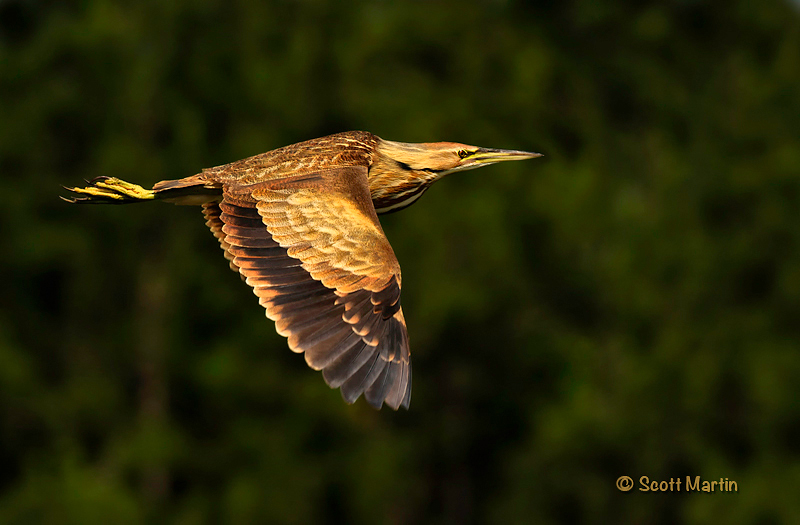
by Scott Martin Photography | Mar 29, 2012 | Birds, Blog, Shore Birds & Waterfowl
While vacationing in Florida two weeks ago, Deb and I visited the Orlando Wetlands Park in Christmas Florida. The park is actually about 45 minutes North East of Orlando, approximately twenty miles East of Merritt Island. It’s a fabulous wetland area that is 1650 acres in size and contains over twenty miles of hiking trails. Bicycles are allowed however cars are not, so be prepared to do a lot of walking when you are there. Deb and I didn’t have a lot of time available so we did an enjoyable six-mile loop seeing everything from rattle snakes, to alligators, to garpike and many different bird species, including the America Bittern shown in this post.
The American Bittern is a member of the Heron Family and in the summer months can be found in Canada. It winters in the south. Although the American Bittern is a common bird it is not often seen as it has the unique ability to blend well into the reeds in which it spends most of its time. They are typically solitary birds and when approached they often stay in one spot, extend their neck and point their head straight up into the air and in doing so blend right into their surroundings. They will even slowly sway their necks back & forth simulating the reeds moving in the wind. Consequently they are birds that are more often heard than seen which makes every nature and bird photographer happy when they finally get to capture one ‘on film’.
The Bittern below didn’t follow the usual pattern and flushed when Deb and walked by without knowing it was there. In fact we were startled when it flew up about ten feet beside us and headed to another location. Fortunately I had just enough time to get about six frames of the bird as he passed by us. Having a dark back ground for one of the shots was a bonus!

The wing detail in the American Bittern is impressive whether viewed from above or below.
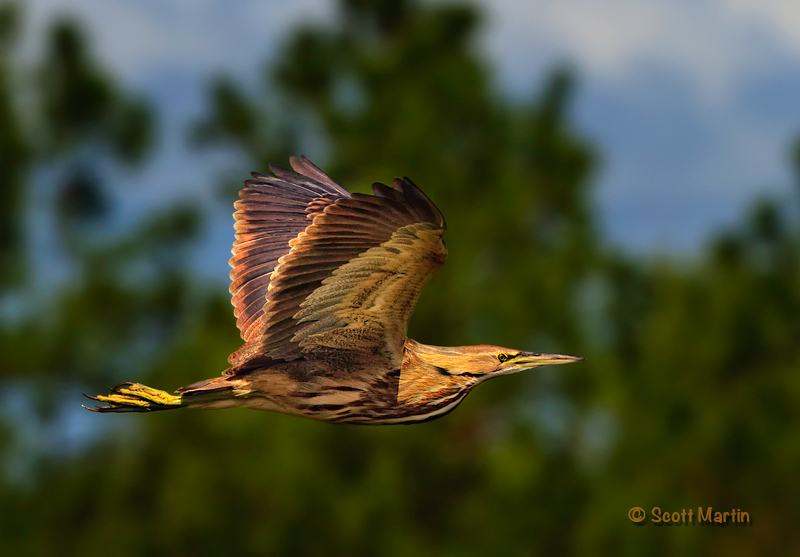
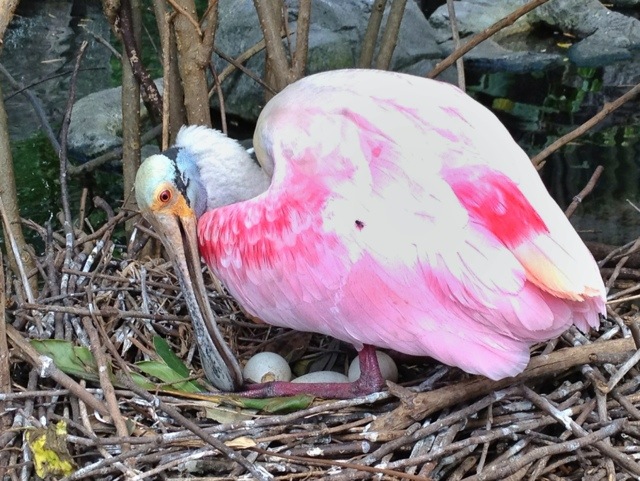
by Scott Martin Photography | Mar 16, 2012 | Birds, Blog, Shore Birds & Waterfowl, Travel
The Roseate Spoonbill has always been a favourite of mine and every trip to Florida we try to get a few shots of them. This year provided an interesting opportunity to photograph a Spoonbill with an iPhone. So please excuse the blown highlights in this image, but exposure control on the iPhone is not as user friendly as it should be 🙂
The Roseate Spoonbill is a bird who’s beak is ideally designed to allow it to eat effectively. The Spoonbill eats by waving the broad spoon shaped end of its beak in shallow water, disturbing the water and silt beneath it. It has very sensitive nerve cells that cause the beak to reflexly snap shut when prey is detected. The vibrant pink colours the Spoonbill takes on as it matures (they are born white) is a result of carotenoid pigments in algae which are consumed by crustaceans and then in turn eaten by the spoonbills. The Spoonbill’s nostrils are located at the base of their beaks so they are able to breath while the spoon end of the bill is submerged while foraging.
The following image was shot with the iPhone 4S and processed with the Snapseed app designed by NIK Software.

28.335975-81.53299
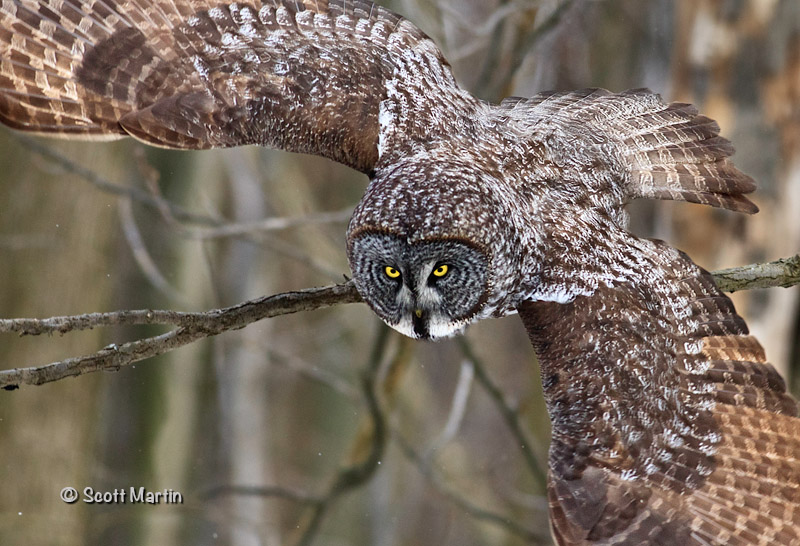
by Scott Martin Photography | Jan 24, 2012 | Birds, Blog, Raptors
Recently I posted an image of a Great Gray Owl that showed up in Kingsville Ontario (on the shores of Lake Erie between Point Peele and Windsor) which is very unusual. The Great Gray Owl is a northern bird and although common in Northern Ontario they are rarely seen south of Timmins. This particular owl arrived in Kingsville before Christmas and was seen almost daily until a couple of weeks ago so perhaps it has started to head back north. It was certainly a local celebrity and even made the front page of the Sunday edition of the Toronto Star
The Great Gray Owl is North America’s largest owl with a length of almost three feet and wing span of five feet. It is a beautiful collection of gray, brown and white colours with a large and interesting head which lacks ear tuffs, has brilliant yellow eyes that are relatively small compared to the other owls and sports a white moustache. Although the Great Gray is the largest owl, it is not the heaviest. The Great Horned Owl enjoys that distinction. Owls are raptors and the Great Gray Owl’s diet consists primarily of Ptarmigan in the north, however when poor food supply in the north forces the owls into more southern areas they feed primarily on voles, mice and perhaps chipmunks or squirrels.
I was fortunate to be able to take some flight shots of the Great Gray Owl. This first image was taken when the owl launched while I was photographing with a 500mm lens from a distance too close to keep the wings in the frame. Although clipping the wings in flight shots is a bit of a “no no” the intensity of the eyes in this shot was enough that I just couldn’t delete the image.

The next two images were taken with a 70-200 f/2.8 L IS zoom lens which is a fairly fast focussing lens needed to track birds while flying. It’s an amazing technology that allows the camera to “lock on” to a moving object and continually keep it in focus while taking about ten frames per second. In these images you can easily see the intensity of the eyes as they lock on to the prey.
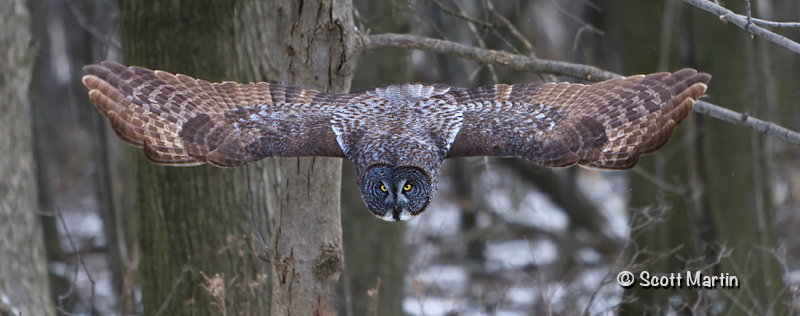
.
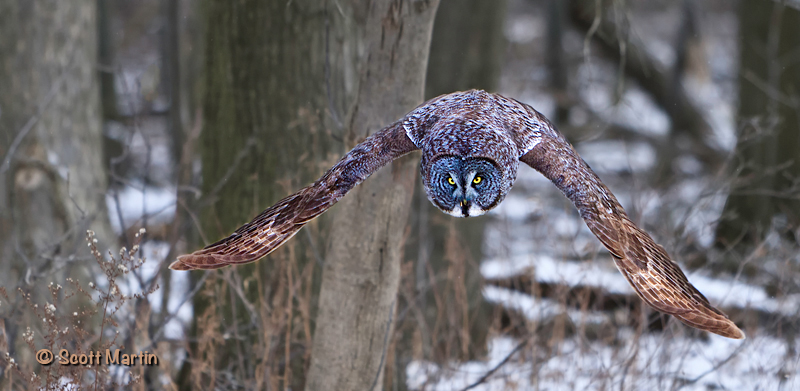
The face of an owl is rarely seen as we don’t often get a chance to be close enough to witness the amazing details it contains. This close up portrait was taken with a 700mm focal length lens from about thirty feet away from the owl.
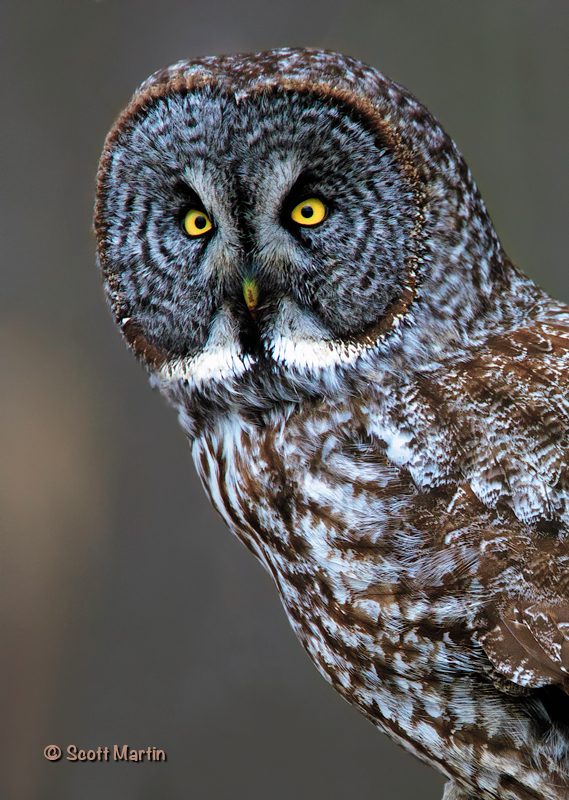
And finally a portrait showing the Owl in its more natural habitat, the snowy winter climate of the Canadian North…..I just wish the flakes were a little larger, but it only snowed for about five minutes over the course of the day I was there.
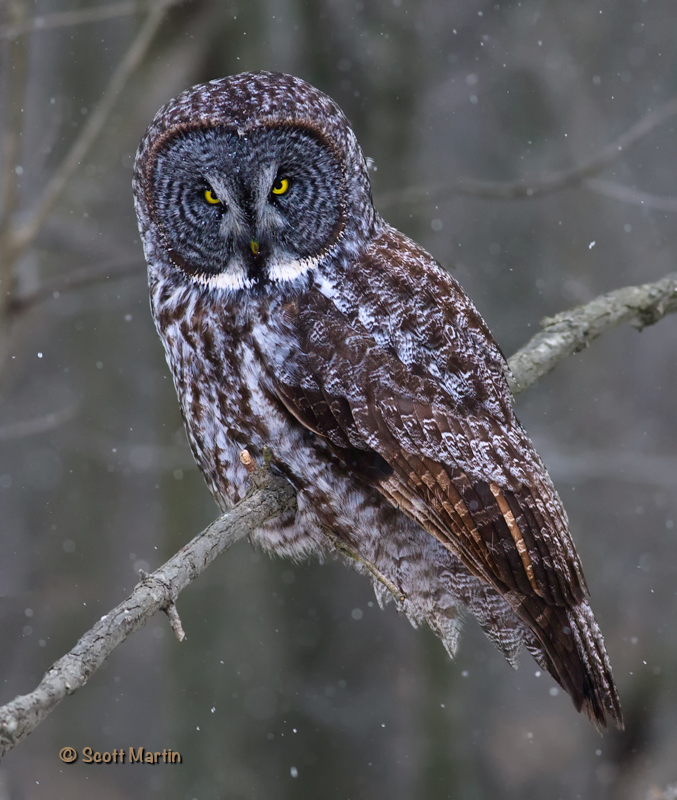
I trust you enjoyed these images of the Great Gray Owl and if ever you hear about one in your area make sure make an effort to get out and see it. You will be glad you did! To see more owl images please click here to visit my gallery.
Please feel free to leave comments or ask any photography questions you may have regarding the posted images. I would be honoured to hear from you and answer your questions.
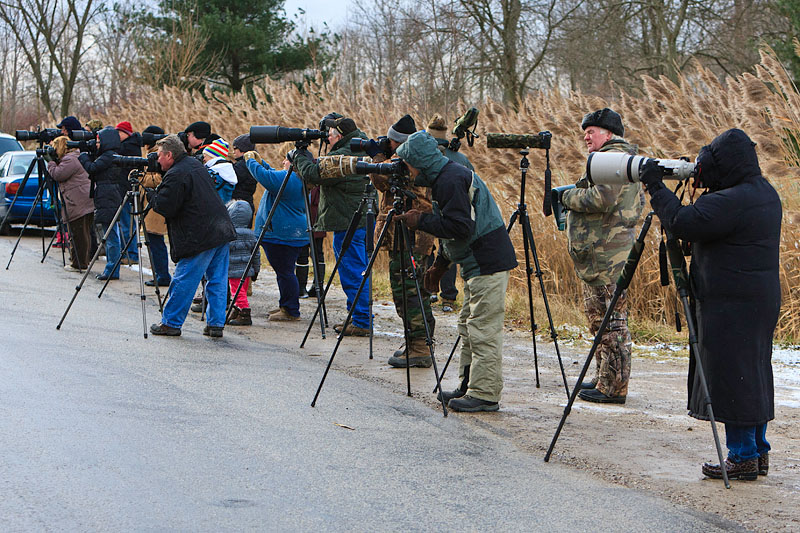
by Scott Martin Photography | Jan 6, 2012 | Birds, Blog, Raptors
Not surprisingly a Great Gray Owl created a big stir this winter when it showed up in Kingsville, Ontario (a small town on the north shore of Lake Erie between Point Peele & Windsor, Ontario) and many people have made the effort to travel great distances to see it. From Oshawa, it was an almost five-hour drive that I was able to make this past Monday and it was a great relief to be able to find the owl after driving all that way! As you can see many other people also wanted to see this magnificent owl.

Although the Owl was pretty much oblivious to the people around, the birders and photographers were very respectful of it and positioned themselves on the other side of the road from the owl as you can see from the above image. This allowed the owl to hunt without distraction or obstruction.
The processing of images from Monday will be an ongoing project and I’ll post some as they get done in the next few weeks. It was an interesting day photographing the Great Gray Owl with everything from an iPhone to 24-105, 70-200, 400, 500 & 700 focal length lenses.
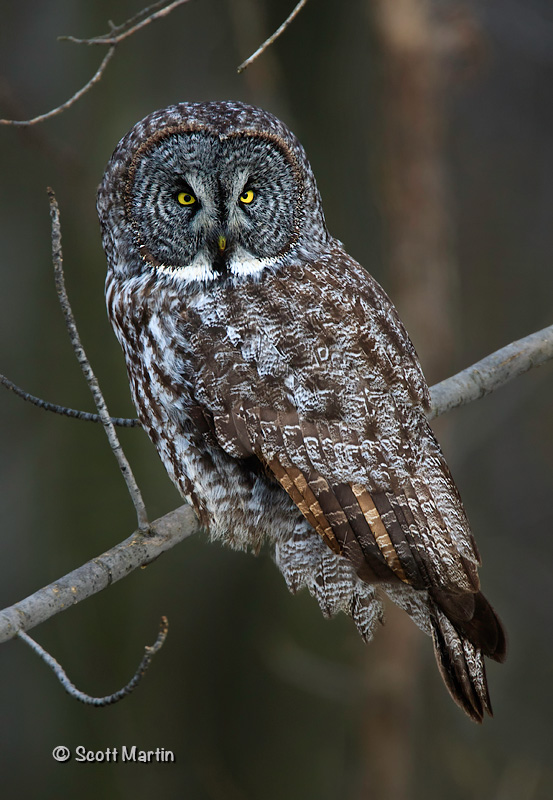
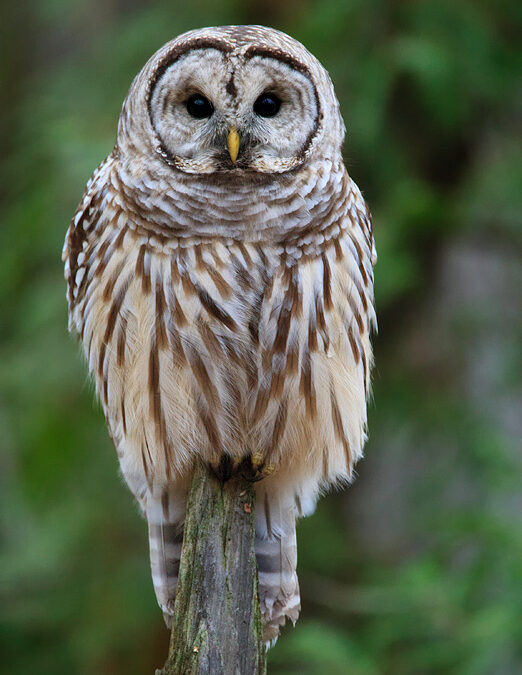
by Scott Martin Photography | Dec 7, 2011 | Birds, Blog, Raptors
My wife and I came across a beautiful Barred Owl while visiting Presqu’ile Provincial Park a couple of weeks ago. Unfortunately it was late in the afternoon, long past the nice light, and to make things worse my tripod was at home so a monopod was the only means of support. The following images were taken at ISO 1250 at shutter speeds of about 1/120 sec at f/5.6 (wide open for the 500/f4 + 1.4x TC combination). The great thing was that the owl was perched on a small stick about eight feet off the ground and the stick was in the middle of a small meadow in the woods so there were no sight obstructing branches within about 100 feet of the owl. Better yet, the owl allowed me to slowly but completely circumduct him which accounts for the varying background changes seen in the photographs.
These images are also the first posted since undergoing a fairly radical change to both hardware and software workflow which included saying goodbye to windows and hello to iMac. Although we’re still getting acquainted with the new computer, it’s quickly becoming obvious why so many photographers endorse the Macs. In the software department we upgraded to the CS5.5 creative suite (from CS4) and also purchased Nik’s suite of plug-ins for Photoshop, which are really quite amazing.
Straight on view. The separation between the owl and the back ground created the perfect out of focus back drop for these images, which are all uncropped as the owl allowed me to ‘foot zoom’ for these frame filling shots.
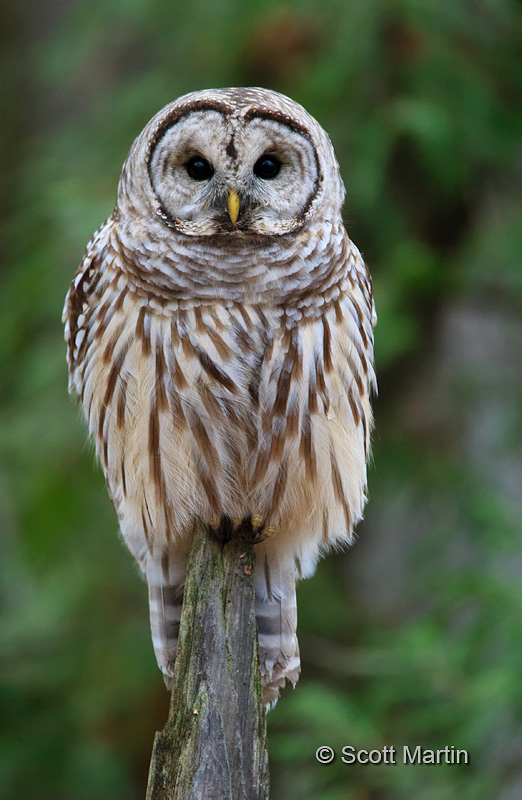
Three quarter view.
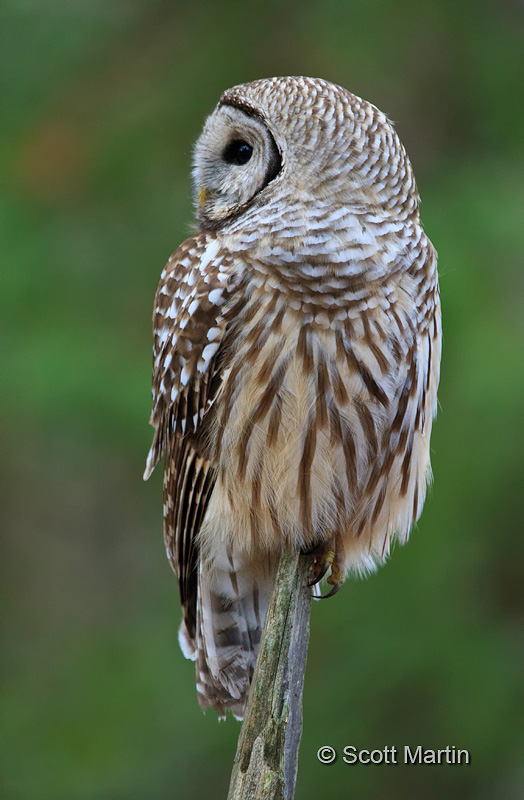
Ontario’s mixed forests are great this time of year with the conifers providing rich green back grounds, while the deciduous trees, devoid of their leaves, create lots of grey tones which look equally good.
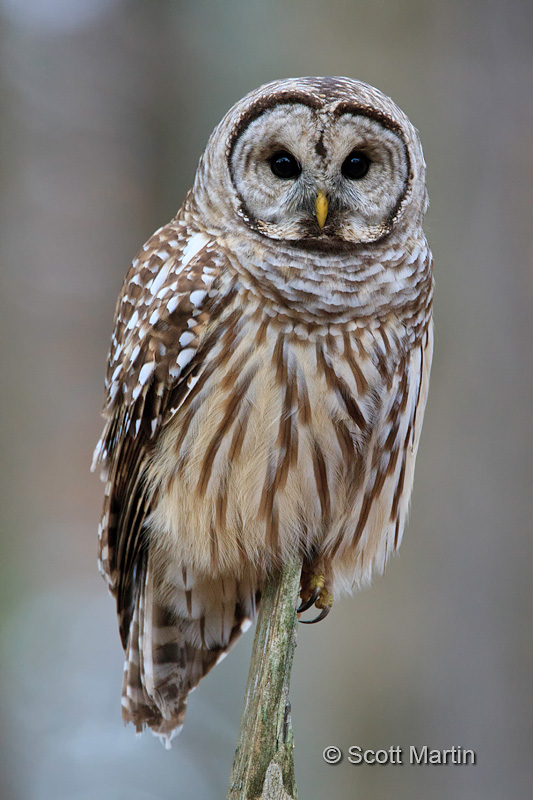
The orange & browns from dead leaves make for yet another interesting back ground.
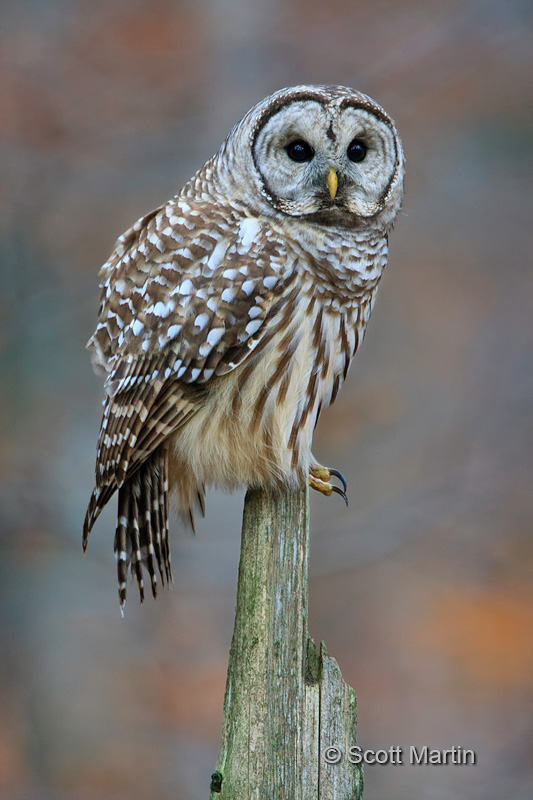
The next time we are visiting Presqu’ile we will arrive earlier in the day and hope to catch this beautiful owl on the same perch!
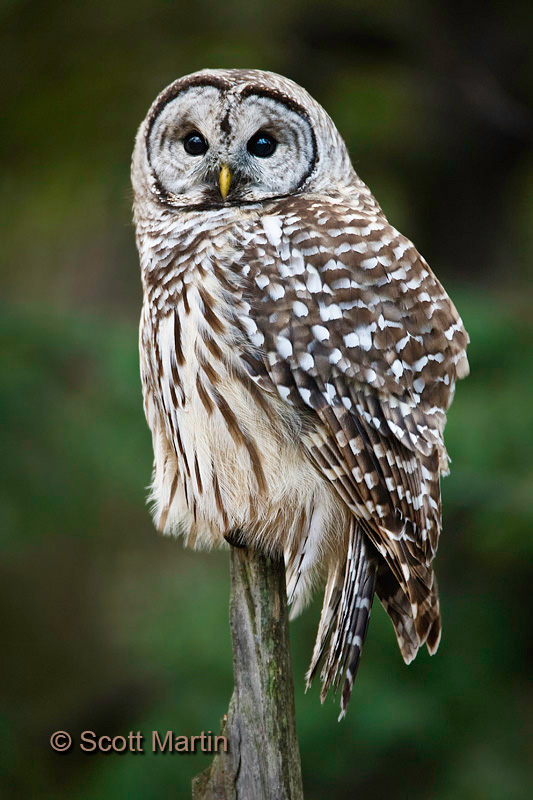
Today my wife and I had the privilege to see a Snowy Owl that arrived in Whitby about a week ago. Based on its size it appears to be a juvenile female and hopefully she will pose for us in the next day or two. A number of Snowy owls have been reported in Southern Ontario this fall so hopefully this will be an irruption year (if it isn’t already). Perhaps some Great Grays will also find their way further south this winter.
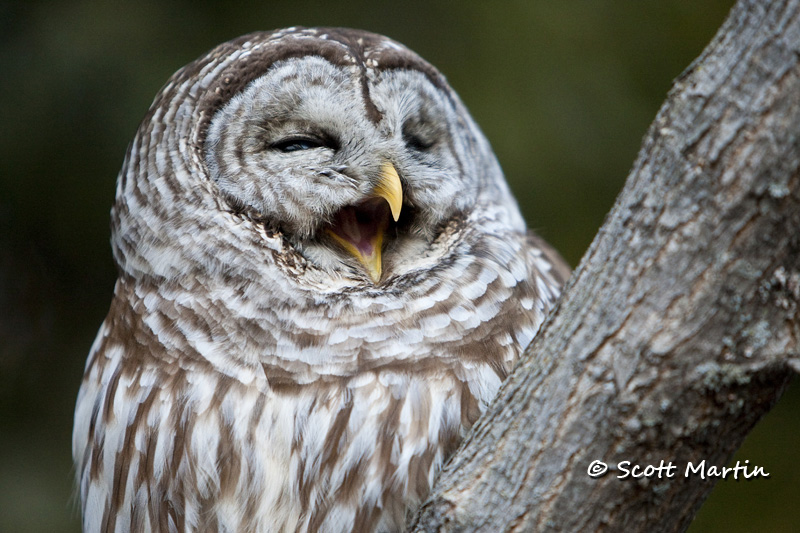
by Scott Martin Photography | Jun 18, 2011 | Birds, Blog, Raptors
Pardon me for the unusual title of this post however I’m at the cottage this weekend and am experimenting with an iPad 2 to make this post. So far everything is going smoothly and the iPad continues to be an impressive toy, well actually more than that, an impressive tool. The wonders of modern technology we are taking for granted today would be considered pure science fiction even two generations ago.
This past winter we were fortunate to have a pair of Barred Owls close by which were seemingly always available for a photo shoot. A couple of months ago Deb & I headed out very near sunset and found this owl sitting about eight feet off the ground and only ten feet from the path we were walking on. I took a few shots with the iPhone and then went back to the car to get my camera and 70-200mm zoom lens. We stayed with t he owl until it was too dark to take anymore pictures. It was a privilege to watch this beautiful bird as it readied itself for another evening of looking for mice & voles.
The following images are basically straight out of the camera with very little, if any, cropping. Although we took several shots the following two represent slightly different views than the usual perched owl poses.
Waking up after the afternoon nap.

Stretching the wings before supper.
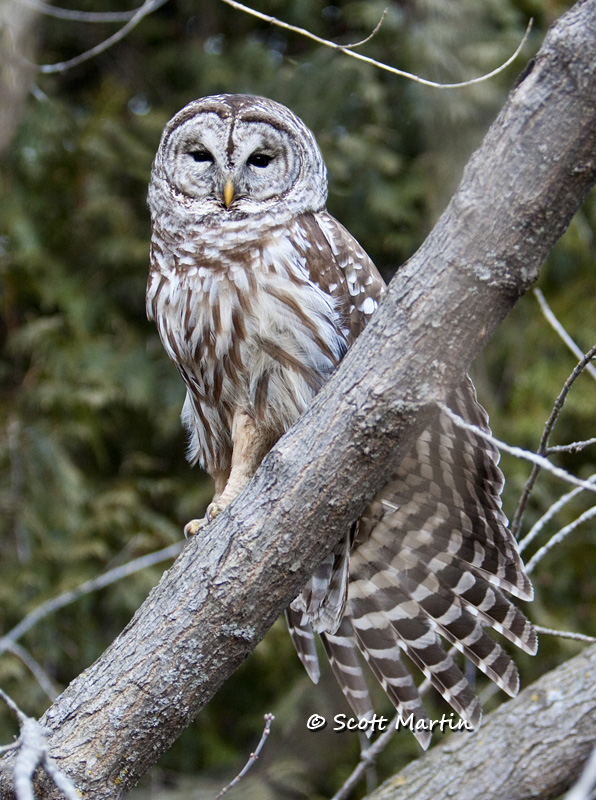
























Follow Scott Martin Photography